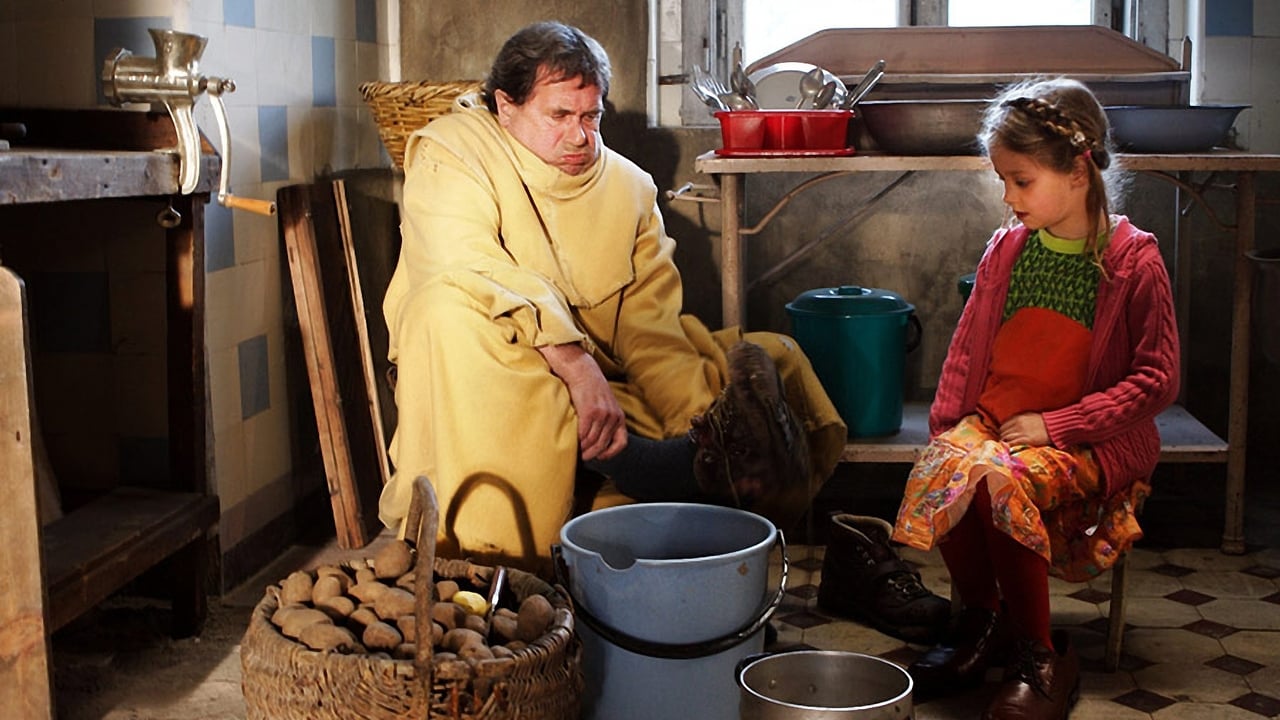IslandGuru
Who payed the critics
SpuffyWeb
Sadly Over-hyped
Fairaher
The film makes a home in your brain and the only cure is to see it again.
Claire Dunne
One of the worst ways to make a cult movie is to set out to make a cult movie.
Brock Lents
It is my opinion that almost anyone who enjoys films would be interested in seeing Jasminum. Those who are acquainted with foreign cinema would especially enjoy it, as it is not the typical Hollywood film. There are no botched drug deals, car chases, or explosions, but a wealth of emotion and relation. The characters are original and well-developed and serve to supplement the main theme of the film, which is important when taking into consideration what constitutes good film-making universally. This is not just a good Polish film, but a good film in general. Kolski is a master director and warrants the praise he has received with his Jasminum, a beautiful and heartfelt film. This film's beauty stems from the characters and the way in which they interact and represent the main theme of the film: the importance of love and relationships. Jasminum is a 2006 release that tells the story of a monastery and its inhabitants. The primary focus of the film is on Brother Sanitas, the pious monastery cook, who lives a monotonous life without the comforts of material possession. Sanitas lives in the monastery with his fellow brothers, Birdcherry and Plum, who are also pious, religiously astute, and prone to bouts of silence as they strive to achieve spiritual perfection. They lead seemingly uneventful lives until an art restoration expert and her daughter pay a visit to the mundane monastery.The most meaningful and interesting aspects of Jasminum come to fruition upon the arrival of the art restoration expert, Natasha, and her five year-old daughter, Eugenia. Natasha has been employed by the monastery to try her hand at restoring an altar painting. Eugenia, who also serves as narrator of the film, is a cute, darling child who wins the heart of the solemn Sanitas. It is the interplay between these two characters that makes the film particularly interesting because Brother Sanitas has held the same routine for 13 years before the arrival of Natasha and Eugenia. Every morning, he feeds the animals, his fellow residents, and finally himself. Their time together represents the aforesaid primary theme of the film: how important love and relationships are in life. Both Eugenia and Sanitas both enjoy spending time together and look forward to what each day will bring in the company of one another, while at the same time understanding that not all relationships are able to last.The love and relationship theme permeates throughout the film, creating a web of relation that involves other characters as well, including Natasha, Brother Birdcherry, Patricia, and the actor Zeman. Through the art of manufacturing scents, memories are recalled and amorous relations are created. For instance, Patricia believes that there is no hope in establishing a relationship with the actor Zeman, who is self-centered, arrogant, and ignorant of her intentions. However, with the help of Natasha and of a special fragrance concocted from jasmine, among other scents, she is able to attract Zeman's attention. Viewers come to realize the importance of scent not only in the history of the characters, but also in the history of the monastery and its 1617 prophecy by Brother Barnabas. Scent functions as the strongest form of sensory stimulation and as a way to help people remember the past.
sdway
Jasminum is a beautifully crafted film and a pleasure to watch. The relaxing pace of the movie is reminiscent of the pace of life within the monastery in which it takes place. A sense of mystery and a genuine fondness for the characters, particularly Brother Salinas and the young Genie, make this movie interesting to watch. With the exception of a few scenes, the majority of the movie takes place in a small monastery, but the mystery surrounding the monastery as well as the actions of its inhabitants keep the viewer compelled throughout.Besides the prior Kleophas and the cook Salinas, there are three other monks in the monastery- Birdcherry, Plum and Sweetcherry- who are sequestered and silent. These three produce extremely desirable body odors, which Fr. Kleophas and the surrounding community regard as a miracle. The initial scene of the movie depicts the reception of the monks' dead bodies into the monastery -- five hundred years ago. This, along with Fr. Kleophas' belief in the coming fulfillment of a prophecy made by the apostle Barnabas, and the repeated appearance of a ghost around the monastery grounds, adds to the sense of mystery that keeps the audience captivated. Kleophas believes that the three odiferous monks are on their way to sainthood, a status that requires the performance of a miracle, but are their miracles for real? Are the brothers somehow reincarnations of their 16th century namesakes? What is the significance of the prophecy, and what secrets does the monastery hold? The issue of science versus faith is an important theme in the movie. The chemist and art restorator Natasha is working to restore a painting that Fr. Kleophas believed would be restored by a miracle, and is able to accomplish what no miracle had. In this sense, science is victorious, but Fr. Kleophas wonders what good a chemically restored painting is. Only a painting restored by a miracle would truly enhance the prayers of the faithful. Natasha seeks also to reproduce the scents of the brothers chemically. Her first attempt recreates Birdcherry's scent, but something is missing and the perfume is a failure. Eventually, she finds the missing ingredient Jasmine, which when mixed with Birdcherry's scent produces an odor Natasha calls "oblivion." The hairdresser Patricia then uses this scent to seduce the object of her affection. However, the seduced man cannot figure out why he is in love; he only recognizes an obsession that seems to be driving him mad, which leads to another theme of the movie: the search for happiness. Patricia believes that possession of Birdcherry's scent will lead to her happiness, because it will cause the actor to fall in love with her, but in reality he is only in love with the scent itself, which will eventually fade or run out. This raises the question of whether one really knows what one wants. Does the actor really want Patricia, or does he want her smell? Does Patricia really want the actor, of whom she knows very little, or does she want merely to be desired? Meanwhile the relationship between Sanitas and Genie exemplifies a healthier type of love, a caring reciprocating relationship where each member cares for the well being of the other.The theme of science versus faith is a very timely one, particularly in Poland. Perhaps no other country besides Ireland stands out so much as the Church's last European stronghold of the faithful. Science is a wonderful and even miraculous thing, but faith is mysterious. As rational human beings, we are inclined to accept that which can be explained to us, but faith is required because we can never completely understand the deepest, most personal mysteries of the human experience. Jasminum was very interesting and thought provoking, and anyone interested in the themes of faith and happiness will find it very enjoyable.
Bora Chung
JasminumThe film is about love: primarily about love or love relationship between a man and a woman. The viewer is gradually introduced first to Patricia's unrequited love to the movie star, and as the story unfolds, also to Jasmina's tragic love story with one of the monks, and finally the unhappy love story of Natasza, the main character. And the movie is about love in a more general sense, or similar feelings between human beings: exemplified in the unusual friendship between the little girl Genia and Brat Zdrówko (Brother Sanitas), or Natasza's friendship with Patricia. Although the topic seems rather trite, "Jasminum" does a good job making it interesting by presenting it in the form of a fairytale for adults. The voice-over narration by a child and the waltz music mainly played by piano set the fairytale atmosphere. Jan Jakub Kolski, the director, obviously has a penchant for light, melodious but slightly sad waltz, as he made use of such music in his previous work "Pornografia (2003)." The difference is that in Pornografia the music is partially diegetic, while in "Jasminum" it is completely non-diegetic. This is because in "Pornografia" the music directly relates to the main character's tragic past. In "Jasminum," on the other hand, the waltz mostly accompanies the young narrator's voice-over, helping to set the atmosphere: tragicomic, sad and comforting at the same time. When doing so, the music also functions as a separator between stages of the plot development, or a symbolic "curtain" between "acts" of the film. As in "Pornografia," tragic love story and secrets from the past are important in Jasminum. The monastery itself holds a tragic love story from the past, and its spell still persists. The spatial setting of a monastery is quite adequate in this context because by definition the setting must separate men and women. Natasza, the altar-painting restorer and perfume maker on the side, turns out to have her own unhappy love story, no matter how absurd: a runaway bridegroom. Patricia, the hairdresser whom Natasza helps, has perhaps the most banal kind of sad love story: unrequited love towards a famous actor. The film, however, treats all of these love stories equally with "a sense of humor and attentiveness" as the director emphasizes in one of the interviews.The precocious narrator Genia is the only person who does not have a tragic love story hidden in the past for obvious reasons. Therefore her narration of the story is fairly objective, with her adorable dryness adding to the humorous aspect. In the end, however, Genia experiences her own version of a sad love story when she must leave Brat Zdrówko.The key to solving all the mysteries of love lies in finding the right aroma. The film is all about magical smell. This extraordinary idea also adds to the fairytale aspect of the film. The important fact is that Natasza's magic perfume works as a love potion only because the love is already there. She merely gives a little boost by caring and acting upon her sympathy. This leads to the final topic of the film: "saintliness," as the director comments.The film's message is that the most important thing between people is love and caring, and acting upon one's caring for another person. When the caring and acting reaches a certain level, it qualifies to be saintliness. The final scene, when Brat Zdrówko becomes a saint, confirms this idea. As the viewers saw in the film, Brat Zdrówko is the one who cares the most, even about the piglets; he is the one who acts the most to take care of the entire monastery, silently and inconspicuously. This final message is conveyed again with "a sense of humor and tender attentiveness" as Zdrówko complains he cannot light the stoves with the stigmata his hands.
asia1906
Kolski at his finest! it truly is a beautiful and heart warming story. I strongly recommend watching it to all you people who enjoy good stories, beautiful scenery and amazing light. Great Polish actors and of course- the little girl who, in my opinion, did a very good job-so natural and so cute! Grazyna Kolska, Janusz Gajos, Adam Ferency, Boguslaw Linda. If you know and respect them, you won't be disappointed, I guarantee. The title is Jasminum and you can almost smell all the fragrances throughout the whole movie.I went to see the movie with my girlfriend, not actually knowing the plot line or anything and we were both speechless after the show. Go see it, even if you are not Polish-this is just a truly beautiful picture.

